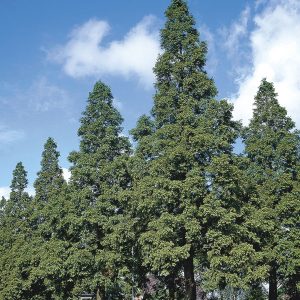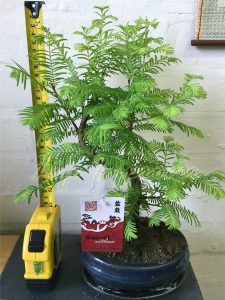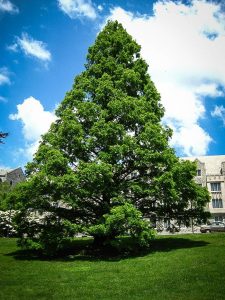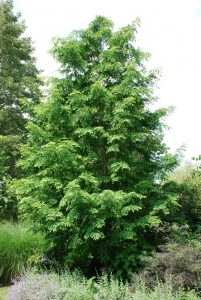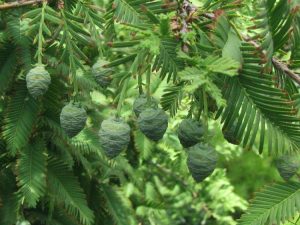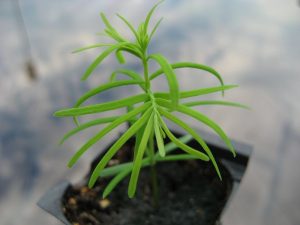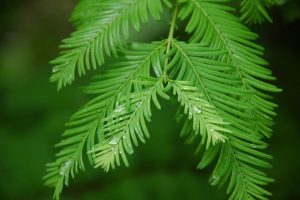Dawn Redwood Tree: A Living Fossil with Remarkable Resilience and Ecological Value
Imagine standing before a towering tree, its reddish-brown bark standing in stark contrast to the vibrant green needles that reach toward the sky. Often called a “living fossil,” the Dawn Redwood Tree was once thought to be extinct. Rediscovered in 1941, this remarkable tree has since captivated the world with its speed, resilience, and ecological importance.
Rediscovery of the Dawn Redwood Tree
This Redwood tree is one of the most unique trees in the world. For millions of years, scientists believed it had gone extinct. Then, in 1941, a population was discovered in China, confirming its survival. As the only living species of its genus, this ancient giant has become a symbol of resilience. It also provides valuable insights into the past. This tree’s rediscovery has had a lasting impact on environmental and ecological studies.
Mr. T. Kan rediscovered the long lost tree while performing a survey in the Hubei and Sichuan provinces of China. The discovery was confirmed in 1946 after the end of the Second World War. It is the sole species of its genre.
Scientific Classification
| Kingdom | Plantae |
| Division | Pinophyta |
| Class | Pinopsida |
| Order | Pinales |
| Family | Cupressaceae |
| Genus | Metasequoia |
| Scientific Name | Metasequoia glyptostroboides |
Physical Characteristics of Dawn Redwoods: Majestic Evergreens with Deciduous Traits
The Dawn Redwood is a fast-growing, deciduous conifer. It can grow up to 165 feet (50 meters) tall. Its reddish-brown bark peels in strips, while its needle-like leaves are arranged in opposite pairs. The tree’s leaves turn golden-yellow in fall, creating a beautiful contrast with its vibrant green needles. Its small cones are light brown, about 0.6 to 1 inch (15-25 mm) in diameter. This fast-growing tree also thrives in wetland areas and riparian zones, adding to its ecological value.
Quick Information
| Tree type | Deciduous |
| Identification | Size: Up to 165 feet (50 meters)Trunk Diameter: 3.3 ft (1 m)Needles (Leaves): 1 in (25 mm), feather-like arrangement, bright green, flattened Bark: Reddish-brown Flowers: Males are a light yellowish-brown arranged in clusters, while females are yellow-green and solitary Cones: Globular to oval in shape, 0.59-0.98 in (15-25 mm) in diameter light brown |
| Distribution | Native to the county of Lichuan in the Chinese province of Hubei |
| Habitat | Damp areas in open forests |
| Hardiness Zones | 4-8 |
| Growth Rate | Fast |
| Lifespan | Over 100 years |
| Growing Conditions | Summer: Pollen cones grow only on trees in areas with hot summersWinter: Does not withstand cold too wellWater: Thrives in stagnant water Light Requirement: Full sun Soil: Tolerates a variety of soil conditions, including moist, well-drained, loamy, sandy, clay, and acidic |
| Drought tolerant | Yes |
| Diseases & Pests | Diseases: Susceptible to canker infections caused by various fungal pathogensPests: Spider mites and Japanese beetles |
| Reproduction System | Monoecious |
| Propagation | Cuttings and stratified seeds |
| Seedling Development | Germinates readily under direct sunlight |
| Cultivars |
|
| Wildlife Value | Provides shade to animals during the summer but not so much in the winter as foliage is lost; deer resistant |
| Uses | Ornamental; popular in bonsai |
| IUCN Conservation Status | Endangered |
Growth and Lifespan: A Tree of Remarkable Resilience
These Redwood Trees have impressive growth rates. They can grow 3-5 feet per year under ideal conditions. This rapid growth allows it to establish itself quickly. Once mature, it can live for over 100 years. While it thrives in wetland environments, the tree is sensitive to extreme cold. This limits its growth in colder regions. However, its adaptability allows it to withstand drought and other environmental stresses, making it a resilient species.
Ecological Role: Supporting Biodiversity and Ecosystem Health
Dawn Redwood Trees play key roles in their ecosystem. They thrive in wetland and riparian zones, where they help stabilize soil and manage water levels. The tree’s dense canopy offers shelter and shade for birds, mammals, and insects. As a pioneer species, it helps restore and improve damaged environments. Furthermore, these redwood trees improve soil quality, support local biodiversity, and regulate water filtration. They are a vital species for both forest restoration and wildlife protection.
Ecological Benefits of Dawn Redwood Trees
- Help stabilize soil and manage water levels in wetland and riparian zones
- Dense canopy offers shelter and shade for birds, mammals, and insects.
- A pioneer species: helping restore and improve damaged environments.
- Improves soil quality: supports local biodiversity, and regulates water filtration.
- Vital species for forest restoration and wildlife protection.
Dawn redwood vs. Bald Cypress: Comparing Two Majestic Trees
Both trees are often compared due to their similar habitats and ability to thrive in wetland environments, where they support biodiversity. However, the Dawn Redwood Tree grows faster than the Bald Cypress Tree. Its needles are arranged oppositely on the stem, while the Bald Cypress has alternate needles. Both trees are important for ecosystem restoration, but the Dawn Redwood’s rapid growth and unique features make it a popular choice for landscaping and environmental projects.
Growth and Lifespan: A Tree of Remarkable Resilience
The Dawn Redwood has an impressive growth rate. It can grow 3-5 feet per year under ideal conditions. This rapid growth allows it to establish itself quickly. Once mature, it can live for over 100 years. While it thrives in wetland environments, the tree is sensitive to extreme cold. This limits its growth in colder regions. However, its adaptability allows it to withstand drought and other environmental stresses, making it a resilient species.
Challenges and Conservation: Preserving a Living Fossil
While the Dawn Redwood is a resilient tree, it faces several challenges. Habitat destruction and environmental degradation threaten its native regions in China. As an endangered species, the Dawn Redwood relies on conservation efforts to survive. Restoration projects focus on protecting natural habitats and promoting sustainable planting. Additionally, researchers are working to combat diseases that affect the tree. Through these efforts, the living fossils have a chance to thrive in both native environments and cultivated areas worldwide.
Interesting Facts: Ancient Trees with Rich History
- Once thought to be extinct, its rediscovery in the 20th century was a monumental event.
- These trees have been around since at least the time of the dinosaurs, and have been called ‘living fossils.’
- Its genus name, Metasequoia, reflects its resemblance to the famous Sequoia trees.
- Dawn Redwood seeds were introduced to the Western world through the Arnold Arboretum in 1948, where it has since become a popular ornamental tree.
- This tree’s rapid growth and adaptability make it a favorite for environmental restoration projects.
Summary: A Symbol of Survival and Ecological Importance
The Dawn Redwood Tree is a true marvel of nature. Once thought to be lost forever, it now stands as a symbol of ecological resilience. Its fast growth, striking features, and vital role in supporting ecosystems make it an essential tree for both conservation and landscape restoration. As the Dawn Redwood faces environmental pressures, ongoing conservation efforts will help preserve this remarkable tree for generations to come.
References:
- https://www.iucnredlist.org/species/32317/2814244
- https://www.savetheredwoods.org/redwoods/dawn-redwoods/
- https://mortonarb.org/plant-and-protect/trees-and-plants/dawn-redwood/
- https://www.thespruce.com/dawn-redwood-growing-profile-3269307
- https://www.weekand.com/home-garden/article/dawn-redwood-diseases-18019310.php
- https://www.weekand.com/home-garden/article/dawn-redwoods-spider-mites-18019315.php
- https://www.weekand.com/home-garden/article/germinate-dawn-redwood-seeds-18050186.php
- https://pfaf.org/user/Plant.aspx?LatinName=Metasequoia+glyptostroboides
- https://plants.ces.ncsu.edu/plants/metasequoia-glyptostroboides/
- http://dendro.cnre.vt.edu/dendrology/syllabus/factsheet.cfm?ID=98
- https://www.arborday.org/trees/treeguide/TreeDetail.cfm?ItemID=914
- http://www.missouribotanicalgarden.org/PlantFinder/PlantFinderDetails.aspx?kempercode=a396
Published on June 13th 2018 by Mark Matzeldelaflor under Cypress.
Article was last reviewed on 9th December 2024.


